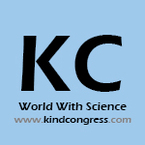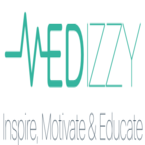Welcome Message
Dear Delegates, Esteemed Speakers, and Honored Guests,
It is with great pleasure and enthusiasm that we welcome each of you to the 7th International Conference on Medical Education, Health Sciences, and Patient Care, held in the vibrant city of Paris on October 21-22, 2026. We are thrilled to gather a distinguished community of professionals, scholars, and thought leaders dedicated to advancing medical education, health sciences, and patient care under the theme, "Global Health Challenges: Educating the Next Generation of Healthcare Leaders."
In an era marked by unprecedented challenges and breakthroughs, this conference aims to serve as a platform for exchanging insights, exploring innovative practices, and fostering interdisciplinary collaboration. The sessions and workshops planned over the next two days will feature leading-edge research, clinical insights, and transformative education models that are reshaping the landscape of
healthcare and improving patient outcomes. We are honored to host a diverse array of expert speakers and participants, each bringing unique perspectives and a shared commitment to pushing the boundaries of what is possible in health sciences and patient care.
Whether you are a seasoned professional, educator, or researcher, or just embarking on your career, we believe this conference will inspire new ideas, spark meaningful collaborations, and empower us all to make a profound impact on the future of healthcare. As we engage, learn, and grow together, we look forward to the many ways our collective efforts will contribute to a healthier, more resilient world.
Thank you for joining us in this journey of innovation, compassion, and discovery. We wish you a productive and inspiring conference.
Warm regards,
Organizing Committee
Sessions & Tracks
Genomics and biotechnology are revolutionizing medicine by enabling personalized treatments based on an individual’s genetic makeup. This integration is at the forefront of innovations in diagnostics and therapeutics, allowing for early disease detection,
targeted therapies, and tailored treatment plans. In areas like oncology, genomic insights can guide treatment decisions, helping to identify which patients will benefit most from specific therapies and minimize side effects.
Biotechnology has also led to advancements in gene therapy, synthetic biology, and regenerative medicine, offering potential cures for previously untreatable conditions. Techniques like CRISPR and gene editing are providing new approaches for addressing genetic disorders and hereditary diseases. The combination of genomics and biotechnology is paving the way for precision medicine, creating more effective treatments and transforming healthcare into a more personalized and preventive practice.
Robotics and automation have become integral to modern surgery, providing precision, efficiency, and safety in complex procedures.
Robotic surgical systems enable surgeons to perform minimally invasive surgeries with enhanced control and accuracy, reducing recovery times and improving outcomes for patients. Procedures such as prostatectomies, cardiac surgeries, and orthopedic interventions are increasingly benefiting from robotic assistance, allowing for greater precision in delicate operations.
Automation is also transforming patient care by streamlining administrative tasks, enabling remote monitoring, and improving diagnostic accuracy. Automated systems can handle routine tasks like data entry, appointment scheduling, and patient monitoring, freeing healthcare providers to focus on patient interactions and complex care decisions. As robotics and automation continue to evolve, their role in healthcare is expanding, paving the way for more efficient, patient-centered care solutions.
Emergency medicine and critical care are vital in treating life-threatening conditions, providing immediate and intensive care to stabilize patients. Advances in this field, such as portable diagnostic tools, telemedicine consultations, and real-time monitoring systems, have enhanced the ability of healthcare providers to deliver rapid, effective interventions. In critical care units, innovations in ventilation,
hemodynamic monitoring, and infection control contribute to better patient outcomes and a higher standard of care.
Critical care advancements also include protocols for managing complex cases, from trauma injuries to acute medical emergencies, with a focus on team-based care. Emergency response teams and
critical care providers collaborate closely to ensure that patients receive comprehensive and timely treatment. As technology and techniques continue to evolve, emergency and critical care medicine are becoming more responsive and effective, ensuring that patients receive the urgent care they need during critical moments.
Simulation-Based Learning and Virtual Medical Training
Simulation-based learning has revolutionized medical training by providing realistic, risk-free environments where students and professionals can practice procedures, refine skills, and learn from mistakes without compromising patient safety. High-fidelity simulations using mannequins, computer-based models, and virtual reality tools allow for hands-on practice in a variety of medical scenarios, from emergency response to complex surgeries. This approach enhances procedural proficiency, decision-making, and teamwork, enabling trainees to gain confidence and expertise before interacting with real patients.
Virtual medical training complements simulation-based learning by offering online platforms and virtual patient interactions that allow healthcare students and practitioners to learn at their own pace. These virtual environments also facilitate remote learning and enable access to high-quality education regardless of location. This modality is particularly beneficial in continuing education, allowing professionals to stay updated on the latest clinical practices and protocols. Together, these tools improve the quality of
healthcare education and contribute to safer and more effective patient care.
Biomedical research has made remarkable strides, bringing forth new insights into disease mechanisms, diagnostic techniques, and
therapeutic options. Research areas such as molecular biology, genetics, and immunology have paved the way for targeted treatments that address the root causes of diseases rather than merely managing symptoms. These advancements have a profound impact on clinical applications, leading to more accurate diagnostics, personalized treatment plans, and ultimately, improved patient outcomes.
In clinical settings, the translation of biomedical research into practice is accelerating, thanks to advancements in technologies such as CRISPR gene editing, stem cell therapies, and regenerative medicine. These tools enable clinicians to offer highly tailored treatments, potentially transforming chronic disease management and enabling more effective interventions for conditions like cancer, cardiovascular diseases, and rare genetic disorders. By bridging the gap between research and patient care, biomedical innovations continue to redefine modern medicine and expand the possibilities of what healthcare can achieve.
Advancing
medical education is crucial for preparing healthcare professionals to meet the demands of modern healthcare systems. Innovations in curriculum development focus on integrating new teaching methodologies, such as problem-based learning, competency-based education, and interprofessional education. These approaches foster critical thinking, enhance clinical skills, and promote teamwork, equipping students with the skills needed to provide high-quality patient care. By incorporating real-world case studies, simulations, and evidence-based practices, medical curricula are evolving to offer a more holistic and practical learning experience.
Additionally, medical schools and institutions are prioritizing the inclusion of soft skills, such as communication, empathy, and cultural competence, which are essential for
patient-centered care. Continuous adaptation of curricula also involves embracing digital tools and resources, like e-learning platforms and virtual classrooms, allowing flexible and personalized learning paths. These innovations support lifelong learning, ensuring healthcare professionals stay abreast of advancements and are better equipped to handle the complexities of evolving healthcare landscapes.
Digital health technologies have transformed the way
healthcare is delivered by enhancing accessibility, efficiency, and patient engagement. Telemedicine, in particular, has grown significantly, offering remote consultations, monitoring, and follow-ups that make healthcare more accessible to patients, especially those in rural or underserved areas. With telemedicine, patients can receive timely medical advice and follow-up care from the comfort of their homes, reducing travel time and wait periods while promoting a more proactive approach to health management.
Beyond telemedicine, digital health encompasses wearable devices, mobile health apps, and electronic health records, all of which contribute to more personalized and data-driven care. Wearable devices allow patients to monitor their health metrics in real-time, enabling early detection of potential issues and facilitating preventive care. Electronic health records (EHRs) streamline information sharing among
healthcare providers, fostering coordinated and comprehensive care. As digital health continues to evolve, it is creating a more interconnected and patient-centered healthcare ecosystem.
Interdisciplinary approaches in healthcare bring together professionals from various fields, such as medicine, nursing, psychology, social work, and nutrition, to provide holistic patient care. This model emphasizes collaboration and communication among specialists to address complex patient needs comprehensively. By leveraging the expertise of diverse
healthcare providers, interdisciplinary care enables more accurate diagnoses, well-rounded treatment plans, and improved patient outcomes, especially for patients with chronic or multifaceted health conditions.
In practice, interdisciplinary care teams are often seen in settings like hospitals, rehabilitation centers, and community
health programs. These teams not only enhance the quality of care but also ensure that patients receive support that addresses physical, emotional, and social aspects of health. Interdisciplinary approaches also foster a collaborative learning environment for healthcare providers, encouraging ongoing education and mutual respect among disciplines, which further benefits patient care and enhances the healthcare system’s efficiency.
Artificial intelligence (AI) and machine learning (ML) are rapidly transforming healthcare by improving diagnostics, predicting patient outcomes, and
streamlining administrative processes. AI algorithms can analyze large datasets to identify patterns and anomalies that may not be immediately apparent to human practitioners, enhancing early detection and diagnosis of conditions like cancer, cardiovascular diseases, and neurological disorders. AI-powered imaging tools, for instance, can assist radiologists in detecting subtle changes in scans, leading to faster and more accurate diagnostics.
In addition to diagnostics, AI is being applied to predictive analytics, enabling healthcare providers to anticipate disease progression and respond proactively.
Machine learning models can evaluate patient histories and health data to predict the likelihood of readmissions, complications, or medication adherence issues. These insights allow healthcare teams to create personalized care plans and improve patient outcomes. As AI technology advances, its potential to enhance healthcare delivery and operational efficiency continues to grow, promising a future where data-driven decisions enhance every aspect of patient care.
Precision medicine is transforming healthcare by moving away from a one-size-fits-all approach to treatments that are tailored to individual genetic, environmental, and lifestyle factors. Through advanced genomic and molecular profiling, precision medicine enables healthcare providers to develop treatments that specifically target the underlying causes of diseases in individual patients. This approach has shown significant promise in areas such as oncology, where personalized therapies can be more effective and less toxic than
traditional treatments.
In practice, precision medicine also leverages data from patients' health records, wearable devices, and other sources to create highly individualized care plans. By considering factors unique to each patient, healthcare providers can make more informed decisions about which treatments, preventive measures, or lifestyle recommendations will be most beneficial. The goal of precision medicine is to improve treatment efficacy and reduce adverse effects, ultimately leading to a more effective and compassionate
healthcare system that prioritizes each patient’s unique health journey.
Public health strategies are critical for disease prevention and management, as they address health issues at a population level. By focusing on preventive measures, such as vaccination programs, health education, and community outreach,
public health initiatives aim to reduce the incidence of diseases and promote healthier lifestyles. These strategies are particularly important in combating infectious diseases, as they help prevent outbreaks and reduce the strain on healthcare systems.
In addition to prevention, public health strategies play a key role in managing chronic diseases, such as diabetes and cardiovascular disease, which are increasingly prevalent in many societies. Through campaigns that raise awareness about healthy behaviors, screenings, and interventions, public health initiatives empower individuals to take control of their health. As public health continues to evolve, it increasingly incorporates data analytics, enabling better monitoring and response to emerging health threats, thereby
safeguarding population health and well-being.
Mental health education is essential for promoting mental wellness and reducing the stigma associated with mental illness. Through community health initiatives, educators and healthcare providers work to raise awareness, provide support resources, and encourage early intervention for mental health issues. Schools, workplaces, and healthcare facilities are increasingly recognizing the importance of
mental health and integrating programs that support emotional well-being and resilience.
Community health initiatives focused on mental health also play a crucial role in reaching underserved populations and providing equitable access to mental
health resources. These initiatives include crisis hotlines, counseling services, and support groups that offer individuals a sense of connection and support. By fostering an environment where mental health is openly discussed and prioritized, these initiatives contribute to healthier, more supportive communities and ensure that individuals have the resources they need for mental and emotional well-being.
Patient safety is a foundational element in healthcare, emphasizing the prevention of errors and adverse effects in patient care. Quality improvement initiatives focus on enhancing care processes to achieve better patient outcomes and reduce the risk of harm. Methods such as root cause analysis, evidence-based practices, and continuous performance monitoring are instrumental in identifying safety risks and implementing solutions that promote a safer care environment. By fostering a culture of safety,
healthcare organizations can build trust with patients and ensure their experiences are positive and secure.
Improving quality and safety is a dynamic process involving everyone from frontline staff to management. Collaborative quality improvement projects encourage open communication, feedback, and a shared commitment to safety goals. Additionally, the use of technology, like
electronic health records and computerized provider order entry systems, has made it easier to track data, prevent medication errors, and streamline clinical workflows. Ultimately, patient safety and quality improvement work hand-in-hand to elevate the standard of care in healthcare institutions worldwide.
Nursing education is evolving to keep pace with changes in healthcare delivery, focusing on the development of critical thinking, leadership, and specialized clinical skills. Emerging trends in nursing education include the integration of simulation-based learning,
interprofessional education, and a greater emphasis on evidence-based practice. These advancements prepare nurses to address the complexities of modern healthcare settings, where they play a critical role in patient-centered care and health management.
In practice, nursing roles are expanding to include specialized areas such as
gerontology, critical care, and mental health, as well as advanced practice roles like nurse practitioners and nurse anesthetists. This shift reflects a growing demand for highly skilled nursing professionals who can provide comprehensive care, lead teams, and contribute to public health initiatives. By embracing these trends, nursing education is shaping a new generation of healthcare providers equipped to meet the diverse needs of patients.
Global health initiatives address health disparities across borders by focusing on universal access to healthcare, disease prevention, and community health development. Collaborative care models unite healthcare professionals, governments, and non-governmental organizations in efforts to tackle complex global health issues, such as infectious diseases, maternal and
child health, and nutrition. These initiatives promote knowledge-sharing, resource allocation, and training, ultimately creating a more interconnected and resilient global healthcare landscape.
Collaborative care models emphasize teamwork and resource optimization, particularly in low-resource settings where healthcare infrastructure may be limited. By working together, global health initiatives can provide sustainable solutions and empower local healthcare providers. This approach not only addresses immediate healthcare needs but also fosters long-term capacity building and resilience in healthcare systems around the world, ensuring that communities are better equipped to handle future
health challenges.
Healthcare policy and ethics are crucial aspects of medical education, shaping the way healthcare professionals approach patient care and decision-making. As healthcare systems evolve, policies governing access, affordability, and quality of care become increasingly complex, impacting both providers and patients.
Medical education must therefore include training in healthcare policy and ethical frameworks to prepare future professionals to navigate these challenges and advocate for equitable healthcare practices.
Ethics in medical education covers topics such as informed consent, patient autonomy, confidentiality, and the physician-patient relationship. Understanding these principles enables healthcare providers to make ethically sound decisions that respect patient rights and improve the quality of care. Incorporating policy and ethics into medical curricula not only fosters a sense of social responsibility but also equips
healthcare providers with the knowledge and skills needed to address the ethical dilemmas they may encounter in their practice.
Pharmaceutical innovation is a driving force in modern medicine, leading to the development of new drugs that improve quality of life and address previously untreatable conditions. Advances in drug discovery are increasingly utilizing high-throughput screening,
computational modeling, and genomics to identify promising drug candidates more efficiently. These methods accelerate the drug development process and allow for a more targeted approach to treating diseases such as cancer, autoimmune disorders, and infectious diseases.
Drug development also faces regulatory, ethical, and economic challenges that require collaboration among researchers, clinicians, and regulatory bodies to bring safe and effective drugs to market. The rise of personalized medicine has also influenced drug development, with a growing focus on creating therapies that are tailored to individual genetic profiles. Pharmaceutical innovations continue to push the boundaries of medicine, offering new treatment options and hope for patients worldwide.
Preventive medicine is a cornerstone of healthcare, focusing on lifestyle factors like nutrition, physical activity, and stress management to reduce the risk of
chronic diseases. By promoting healthy habits and preventive screenings, healthcare providers can help individuals maintain wellness and prevent diseases such as diabetes, cardiovascular disease, and obesity. Education on nutrition and lifestyle changes is increasingly integrated into healthcare, empowering patients to make informed choices about their health.
Preventive medicine is also a growing focus in public health policy, with initiatives that encourage healthier diets, increased physical activity, and access to preventive care services. Through community programs, health screenings, and workplace wellness initiatives, preventive medicine seeks to reduce the healthcare burden by preventing illness before it starts. As the understanding of lifestyle’s impact on health deepens, preventive medicine continues to play a vital role in promoting long-term health and well-being.
Health informatics leverages data to support healthcare decision-making, improve patient outcomes, and enhance operational efficiency. By integrating
electronic health records (EHRs), clinical decision support systems, and data analytics, health informatics enables providers to access patient data, track health trends, and deliver personalized care. Health informatics also supports population health management by analyzing data across large groups to identify health trends and risk factors, informing public health interventions.
Data-driven decision-making allows healthcare professionals to make more informed choices based on real-time insights and historical data. This approach is invaluable in areas such as predictive analytics, where providers can anticipate
potential health issues before they occur. As data systems and analytical tools become more advanced, health informatics continues to drive improvements in the quality, accessibility, and efficiency of healthcare.
Pediatric and geriatric care require specialized approaches that address the unique needs of children and older adults. Pediatric care focuses on the growth,
development, and health of infants, children, and adolescents, emphasizing preventive care, vaccinations, and early interventions to ensure a healthy start to life. Pediatricians are trained to recognize developmental milestones and address health issues that are specific to younger populations, from genetic disorders to behavioral concerns.
Geriatric care, on the other hand, focuses on the health and well-being of older adults, addressing age-related health issues, chronic disease management, and quality-of-life improvement.
Geriatricians specialize in treating conditions commonly associated with aging, such as osteoporosis, dementia, and mobility issues, and provide supportive care tailored to an individual's needs. Both pediatric and geriatric care emphasize a holistic, compassionate approach that supports patients at every stage of life, ensuring that care is both age-appropriate and comprehensive.
Optimal nutrition during childhood lays the foundation for lifelong health, cognitive development, and disease prevention. This session, “Pediatric Nutrition and Growth” will bring together experts in pediatrics, dietetics, and public health to explore the latest evidence-based strategies for promoting healthy growth trajectories. Key topics include assessment and management of undernutrition and obesity, micronutrient deficiencies, and culturally sensitive feeding practices from infancy through adolescence. Presenters will discuss innovative educational curricula that integrate pediatric nutrition into medical and allied health training, as well as community-driven intervention programs that address social determinants of child health. Attendees will gain insights into emerging research on the gut microbiome’s role in growth, best practices for counseling families on breastfeeding and complementary feeding, and policy frameworks that support equitable access to nutritious foods. By highlighting practical tools and collaborative models, this session aims to equip healthcare professionals with the knowledge and skills needed to optimize nutritional care for children and foster healthier generations.
Participation and presentation options
The 7th International Conference on Medical Education, Health Sciences, and Patient Care offers flexible participation and presentation options to accommodate attendees from diverse backgrounds, schedules, and geographic locations. Whether attending in person, presenting research, or engaging virtually, participants can tailor their experience to maximize networking and knowledge-sharing opportunities. Here are the options available:
1. Oral Presentation
-
Eligibility: Researchers, academics, clinicians, and industry professionals whose work aligns with the conference theme are encouraged to apply.
-
Format: Presenters will deliver a 15-20 minute live presentation followed by a Q&A session.
-
Objective: Ideal for those who wish to share in-depth insights, research findings, and innovative solutions with an interactive audience.
2. Poster Presentation
-
Eligibility: Suitable for participants with completed research, case studies, or preliminary findings.
-
Format: Participants will display a visual representation of their research in a designated poster area. During poster sessions, presenters will discuss their work with attendees.
-
Objective: Provides a platform for one-on-one interaction, allowing presenters to discuss their research with experts and peers in a more informal setting.
3. Virtual Presentation
-
Eligibility: Open to participants who are unable to attend in person but wish to present their research.
-
Format: Virtual presenters can either submit a pre-recorded presentation or present live online, with a Q&A component for live sessions.
-
Objective: Allows participants to share their work and engage with a global audience from a remote location, broadening the accessibility of the conference.
4. Panel Discussion Participation
-
Eligibility: Expert panelists are selected to participate based on their field expertise and insights into relevant topics.
-
Format: Panelists will engage in structured discussions with other experts, moderated by a session chair, to explore current issues, challenges, and advancements in medical education and patient care.
-
Objective: A collaborative forum for thought leaders to debate and share perspectives, fostering knowledge exchange and collaborative solutions.
5. Workshop or Symposium Participation
-
Eligibility: Researchers and practitioners with hands-on knowledge or specialized techniques relevant to healthcare education, health sciences, or patient care are encouraged to apply.
-
Format: Workshops and symposia involve practical, skill-building sessions lasting 60-90 minutes, focused on specific topics or methods.
-
Objective: Provides attendees with an interactive learning experience and the chance to develop new skills, ideal for those interested in applied knowledge and practical engagement.
6. Audience Participation (In-Person or Virtual)
-
Eligibility: Open to professionals, students, and other individuals interested in medical education, health sciences, and patient care.
-
Format: Audience members can attend all keynote addresses, plenary sessions, and panel discussions. Virtual attendees will have live-stream access to selected sessions and may participate in Q&As online.
-
Objective: Offers attendees an opportunity to gain insights from industry experts, network with peers, and participate in Q&A sessions without the requirement to present research.
7. Young Researchers Forum
-
Eligibility: Specifically designed for early-career researchers and students in related fields.
-
Format: Young researchers will present short presentations in a supportive environment, with mentorship from senior academics and feedback on their work.
-
Objective: Provides an invaluable opportunity for early-career researchers to showcase their work, receive constructive feedback, and establish connections within the academic community.
8. Exhibitor or Sponsor Opportunities
-
Eligibility: Organizations and companies in healthcare, medical education, pharmaceuticals, and related sectors interested in showcasing products, technologies, or services.
-
Format: Exhibitors will have designated spaces within the conference venue to engage with attendees directly, while sponsors may participate through branding, special sessions, or workshops.
-
Objective: A promotional platform for companies to connect with a targeted audience, expand their reach, and build partnerships within the healthcare and medical education sectors.
Key Benefits of Participation
-
Networking: Connect with thought leaders, professionals, and peers in the field.
-
Knowledge Exchange: Gain insights into the latest research, trends, and innovations.
-
Professional Recognition: Enhance professional visibility and recognition within the community.
-
Learning Opportunities: Expand skills and knowledge through diverse sessions, workshops, and presentations.
Market Analysis
The global
medical education and healthcare market is witnessing significant growth driven by an increasing demand for high-quality education, innovative training methods, and improved patient care. Valued at approximately USD 8.45 trillion in 2022, the healthcare market is projected to expand rapidly due to advancements in technology, a growing aging population, and an emphasis on preventive care. As healthcare systems evolve, there is a pronounced focus on continuous
professional development for healthcare providers, which underlines the necessity for conferences that address current trends and challenges in medical education and health sciences. This conference aims to position itself at the forefront of this dynamic industry, providing a platform for knowledge sharing and professional development.
The conference targets a diverse audience, including healthcare professionals such as physicians, nurses, and allied health practitioners seeking to enhance their skills and knowledge. It also appeals to educators and trainers involved in medical education, researchers sharing their findings, students eager to learn about advancements in their fields, and
healthcare administrators interested in implementing innovative strategies. By catering to these various stakeholders, the conference fosters an inclusive environment where interdisciplinary collaboration can thrive. The emphasis on patient-centered care and interprofessional education aligns with
contemporary healthcare priorities, making this event particularly relevant in today's healthcare landscape.
Emerging trends within the industry, such as technological integration, interprofessional collaboration, and a focus on global health initiatives, significantly influence the conference's programming. The rise of telemedicine and e-learning platforms is reshaping
medical education, creating a demand for conferences that explore these technological advancements. Furthermore, the increasing recognition of the importance of teamwork across healthcare disciplines drives interest in events promoting interprofessional education. By addressing these trends, the conference can position itself as a leader in the dialogue surrounding the future of healthcare education and practice.
Despite the competitive landscape of the conference market, characterized by established events and specialized workshops, the 7th International Conference on
Medical Education, Health Sciences, and Patient Care holds several strengths that can be leveraged. Its reputation for quality and its focus on current trends provide a solid foundation for attracting participants. However, it is essential to acknowledge
potential challenges, such as competition from larger conferences and economic fluctuations that could impact attendance. By conducting a thorough SWOT analysis, the conference organizers can identify opportunities for growth, such as hybrid formats that expand reach and engage a global audience while addressing threats effectively.
To effectively reach the target audience and maximize attendance, a robust marketing strategy will be employed. Digital marketing efforts, including
social media campaigns and email outreach, will play a crucial role in promoting the conference and engaging potential participants. Collaborating with academic institutions and professional organizations will enhance visibility and credibility, while content marketing through blogs and newsletters will help build interest and establish authority in the field. Additionally, offering early-bird registration discounts and group rates will incentivize participation, further enhancing the conference's appeal.
In conclusion, the 7th International Conference on Medical Education,
Health Sciences, and Patient Care is well-positioned to capitalize on the growing demand for innovative education and improved patient care practices. By targeting a diverse audience, embracing current industry trends, and employing effective marketing strategies, the conference aims to foster a collaborative environment that advances knowledge and enhances the quality of healthcare delivery globally. The commitment to addressing the evolving needs of the
healthcare sector ensures that this conference will be a valuable event for all stakeholders involved.










